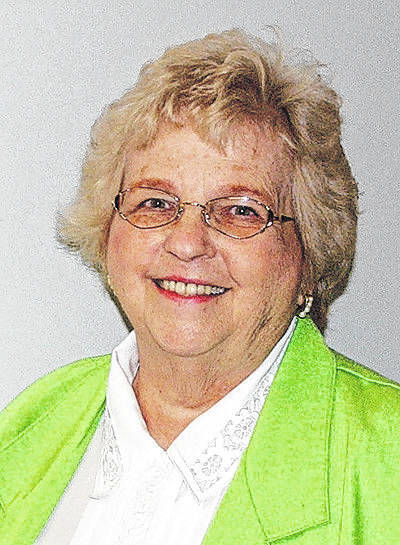
Once upon a time, there was a small group of settlers who locate in the northwestern portion of what later became Greene County.
When the Northwest Territory opened to residents, many settlers came from Kentucky and Virginia, eager for more land and perhaps new adventure some came as early as 1799.
In 1816 a new village was laid out and platted by Joseph Tatman, a native of Kentucky and Samuel Cosad who had come from Virginia. Soon more folks moved into the village.
Dill’s History of 1881 describes the land in this manner: “It is from two to three miles in width, and about five miles long. Viewed from either of the hills which trend away from its northern, eastern, and southern boundaries furnished to the lover of the beautiful in nature a panoramic view of fertile fields and woodlands, villages, hamlets and sparkling streams, while its western boundary is marked by the impetuous stream which enters if from the northeast, and was appropriately named by the aboriginal owners of the soil, Mad River.”
Since Tatman was the principal owner, the village was usually known unofficially by his name.
This story which I was told may or may not be factual, but it is often told folk legends.
It seems that some of the Indians were still living in the proximity and from time to time would capture some of the settler’s children. The children were adopted into the tribe and treated as the native children.
Of course, the settlers were not happy and so retaliation seemed to be the best course, and so the settlers began to capture the Indian children when possible.
Finally, the two sides decided enough was enough and agreed to meet to exchange the children back to their original parents.
The old chief had grown very fond of the children he had adopted and wanted to know where they would live when they were returned to their natural parents.
Tatman and the chief agreed to meet on what later became known as Reed’s Hill. Tatman was proud of the village and was pleased when the chief agreed that this looked like a nice place for the children to be living.
He looked out and waved his hand over the area and is to have said “Yonder lays a fair field.”
Legend says this is the way that the village of Fairfield received its name. Whether this is true or not, the village was indeed called Fairfield.
The village of Osborn had quite a different beginning.
When it was announced that the railroad would build tracks throughout Greene County, most towns welcomed the idea. This was considered a benefit to everyone who had goods to ship or wanted transportation to other parts of the United States. What joy that would bring to any community!
However, Fairfield was nicely laid out and was considered a very progressive town.
The city fathers decided that there was no way the village wanted to have a big smoke belching, noisy train dispel their comfortable town. They simply turned down the offer and basically told the railroad surveyors to find some other location for the tracks.
Another location was planned about tw0 and one-half miles from Fairfield.
As the rail transportation became readily available, settlers began to move to the area adjacent to the track and soon another village sprung up.
This too, was a nice little town, well arranged and in time very prosperous as well. The name given to the town was Osborn in honor of the Railroad Superintendent George Osborn.
The two towns prospered for some years until the 1913 flood in Dayton changed the lives of the people in both towns forever.
The Miami Conservancy District determined that a massive dam should be built which would prevent any future flooding. The problem was that the village of Osborn would be flooded and so the residents were told the government would purchase their property and they would have to find new places to live.
The folks in Osborn had invested a great deal of time and money on their properties and were reluctant to leave it all behind to be covered by the water. It was then that Osborn Removal Company was established and one by one, the houses and other structures were moved to a new location adjacent to the city of Fairfield.
For many years, the two cities existed side by side. Fairfield had its own mayor, city council, fire department, etc. while Osborn also had its own city management.
After a few years, it seemed appropriate to share some of the emergency equipment. One water company served the entire region and more and more Osborn residents were shopping in the Fairfield stores and vice versa.
In time, the two cities realized that they could function better as one and so January 1, 1950 a new city was established. Several years of planning and discussions had gone by before the city of Fairborn became a reality but now the two were united as one.
The first recognition of the new name was posted even before the January 1 date. The movie theater erected a new marque with the name “Fairborn.”


